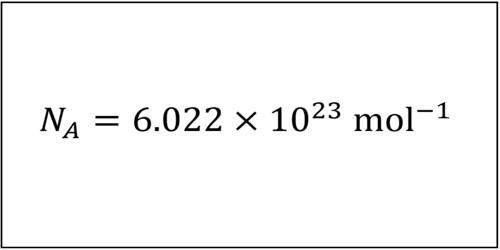Contrary to the beliefs of generations of chemistry students, Avogadro’s number—the number of particles in a unit known as a mole—was not discovered by Amadeo Avogadro (1776-1856). Avogadro was a lawyer who became interested in mathematics and physics, and in 1820 he became the first professor of physics in Italy. Avogadro is most famous for his hypothesis that equal volumes of different gases at the same temperature and pressure contain the same number of particles.
Start studying Avogadro's Number. Learn vocabulary, terms, and more with flashcards, games, and other study tools. Definition of Avogadro's number: the number 6.022 × 1023 indicating the number of atoms or molecules in a mole of any substance — called also Avogadro number First Known Use of Avogadro's number.
The first person to estimate the actual number of particles in a given amount of a substance was Josef Loschmidt, an Austrian high school teacher who later became a professor at the University of Vienna. In 1865 Loschmidt used kinetic molecular theory to estimate the number of particles in one cubic centimeter of gas at standard conditions. This quantity is now known as the Loschmidt constant, and the accepted value of this constant is 2.6867773 x 1025 m-3.
Avogadro's Law: If you have two gasses at the same temperature and pressure, they will occupy the same volume only if they contain the same number of molecules. The mole is a unit of measure for the amount of a chemical substance. The mole is equal to Avogadro's numb. 1) Each mole of molecules contains N number of molecules, where N equals Avogadro's Number. How many molecules are in each answer: (a) 1 x N = N (b) 2 x N = 2N (c) 4 x N = 4N (d) N x 5 = 5N. 2) Each N times the number of hydrogen atoms in a formula equals the total number of hydrogen atoms in the sample: (a) N x 12 = 12N (b) 2N x 8 = 16N.
The term “Avogadro’s number” was first used by French physicist Jean Baptiste Perrin. In 1909 Perrin reported an estimate of Avogadro’s number based on his work on Brownian motion—the random movement of microscopic particles suspended in a liquid or gas. In the years since then, a variety of techniques have been used to estimate the magnitude of this fundamental constant.

The Avogadro Number Is Equal To
Accurate determinations of Avogadro’s number require the measurement of a single quantity on both the atomic and macroscopic scales using the same unit of measurement. This became possible for the first time when American physicist Robert Millikan measured the charge on an electron. The charge on a mole of electrons had been known for some time and is the constant called the Faraday. The best estimate of the value of a Faraday, according to the National Institute of Standards and Technology (NIST), is 96,485.3383 coulombs per mole of electrons. The best estimate of the charge on an electron based on modern experiments is 1.60217653 x 10-19 coulombs per electron. If you divide the charge on a mole of electrons by the charge on a single electron you obtain a value of Avogadro’s number of 6.02214154 x 1023 particles per mole.
The Avogadro Number
Another approach to determining Avogadro’s number starts with careful measurements of the density of an ultrapure sample of a material on the macroscopic scale. The density of this material on the atomic scale is then measured by using x-ray diffraction techniques to determine the number of atoms per unit cell in the crystal and the distance between the equivalent points that define the unit cell (see Physical Review Letters, 1974, 33, 464).
